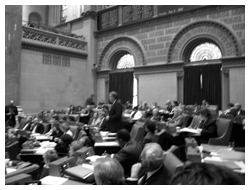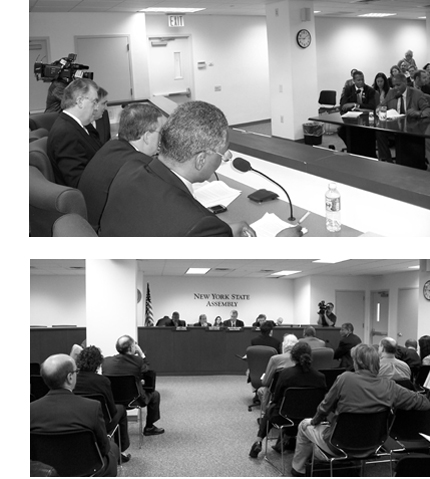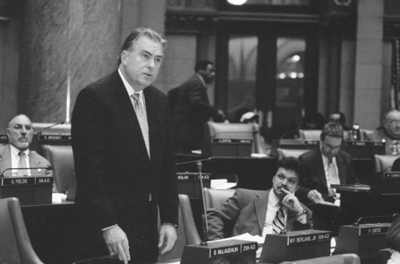 Assemblyman Brian McLaughlin
Assemblyman Brian McLaughlin
|
We have had a very productive session in Albany. On time, for the first time (in 21 years), the Legislature was able to enact a budget which restored vital services as well as job-creating legislation and tax incentives for housing and businesses. As the Chairman of the Real Property Taxation Committee, I am very proud of the many initiatives we have forged, and the inroads made to achieve a real property taxation system which is equitable, efficient, and provides the greatest advantages to the greatest number of New Yorkers.
 Assembly Speaker Sheldon Silver with Assemblyman Brian McLaughlin.
Assembly Speaker Sheldon Silver with Assemblyman Brian McLaughlin.
|
Throughout this report, you will find information about some of the legislation which my Committee has shepherded. With the leadership of Speaker Sheldon Silver and the Chairman of the Ways and Means Committee, Assemblyman Herman Farrell, we were able to champion such issues as improving tax assessment methods on real property and special franchise property, providing tax relief for home and co-op owners, tax incentives for Mitchell-Lama apartments, assisting seniors with the enhanced STAR application process and promoting the economic vitality of NYC.
 Assemblyman McLaughlin addresses the Assembly.
Assemblyman McLaughlin addresses the Assembly.
|
|
As always, I welcome your views on these and other important issues. I urge you to contact my District Office at 718-762-6575, 163-13 Depot Road, Flushing, NY 11358, email at mclaugb@assembly.state.ny.us. Please know that I look forward to continue working on behalf of all New Yorkers and, with your support, I will once again lead the fight to meet the challenges before us. Through the Real Property Taxation Committee, we will help make the City and State that we call “home” a source of great pride, accomplishment, and comfort to its residents.
|
Sincerely, |

 Assemblyman Brian McLaughlin talks with members of the
Broadway-Flushing Homeowners Association.
Assemblyman Brian McLaughlin talks with members of the
Broadway-Flushing Homeowners Association.

 Assemblyman McLaughlin advocating for the passage of economic development initiatives.
Assemblyman McLaughlin advocating for the passage of economic development initiatives.